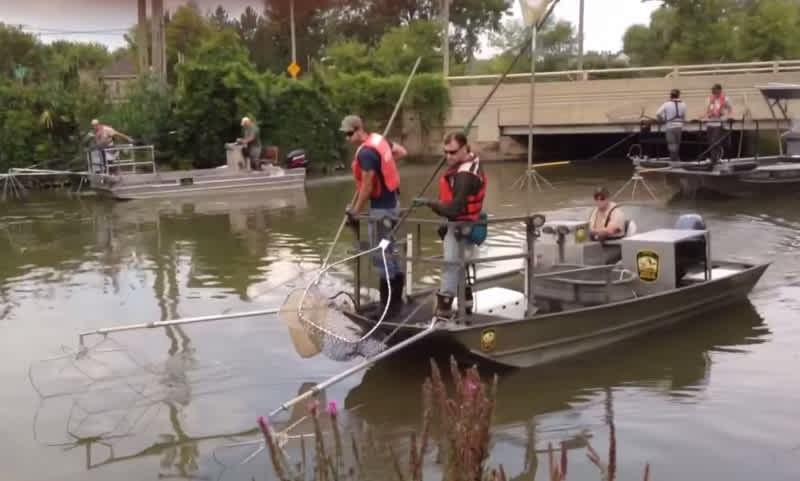Wildlife Agencies Converge on Lake Erie to Prevent Asian Carp Incursion
OutdoorHub Reporters 09.17.14

A coalition of 10 US and Canadian wildlife agencies took part in a field exercise in Lake Erie last week to test methods of stopping a possible Asian carp invasion. Although experts believe that no reproducing populations of Asian carp currently exist in the lake, officials say that the Lake Erie drainage basin is vulnerable. There are four connection points between the Ohio River—where Asian carp have already been detected—and Lake Erie, putting the lake on the high on the list of entry points for carp into the Great Lakes.
“Once aquatic invasive species get into a system where they’re not native, they cause all kinds of issues for folks that have to manage that resource, because we don’t know what those outcomes are ultimately going to be,” Jeff Tyson, the Ohio Department of Natural Resources (DNR) program administrator for Lake Erie, told The Voice.
Asian carp species like bighead and silver carp can out-compete native fish and wreak havoc in a $15 billion regional recreation and transportation industry. This is because the bottom-feeding fish can consume vast amounts of plankton, a trait that made the fish valuable for aquaculture farms but soon became a disaster after the fish escaped into the Mississippi in the late 1960s. Wildlife officials have already found traces of carp eDNA near Killbuck Creek and the Portage Lakes, two waterways that connect the Ohio River to Lake Erie. Thankfully, no live specimens were found.
The Ohio DNR is trying to keep it that way. Earlier this year the state released its Asian Carp Tactical Plan, a detailed foundation for the state’s objectives until 2020. The top objective in the plan is to keep Asian carp from being established in Lake Erie.
Watch biologists tag a grass carp:
“Ohio’s Lake Erie recreational fisheries are economically important. Each year anglers expend nearly 4 million angler hours to harvest 2.7 million kg (6 million lbs) of fish, generating over $760 million in economic revenue for the region,” the DNR stated in the plan.
Estimates from state and federal agencies place the number of anglers who visit the lake at about 332,000. These recreational fishermen are responsible for more than $486 million in direct retail sales and support about 7,000 jobs across the region. In addition, there are about 750 guides operating out of the area.
“The best strategy is to keep the dag-gone things out of the system,” Tyson said.
The three-day exercise is designed to do exactly that. Over 60 employees from the participating agencies converged on Lake Erie to run tests like electrofishing and netting.
“This exercise will help us fine-tune our abilities to respond to an invasive species finding in the Great Lakes,” said Tammy Newcomb, Michigan DNR senior water policy advisor, in a press release. “It’s also a great opportunity for the Michigan DNR to work closely with other natural resources agencies to implement the Great Lakes invasive species mutual-aid agreement with our partner agencies.”
According to the Michigan DNR, biologists came from the the natural resources departments of Michigan, Ohio, Minnesota, New York, Pennsylvania, Illinois, and Ontario, as well as the US Fish and Wildlife Service, US Geological Survey, and Fisheries and Oceans Canada.

